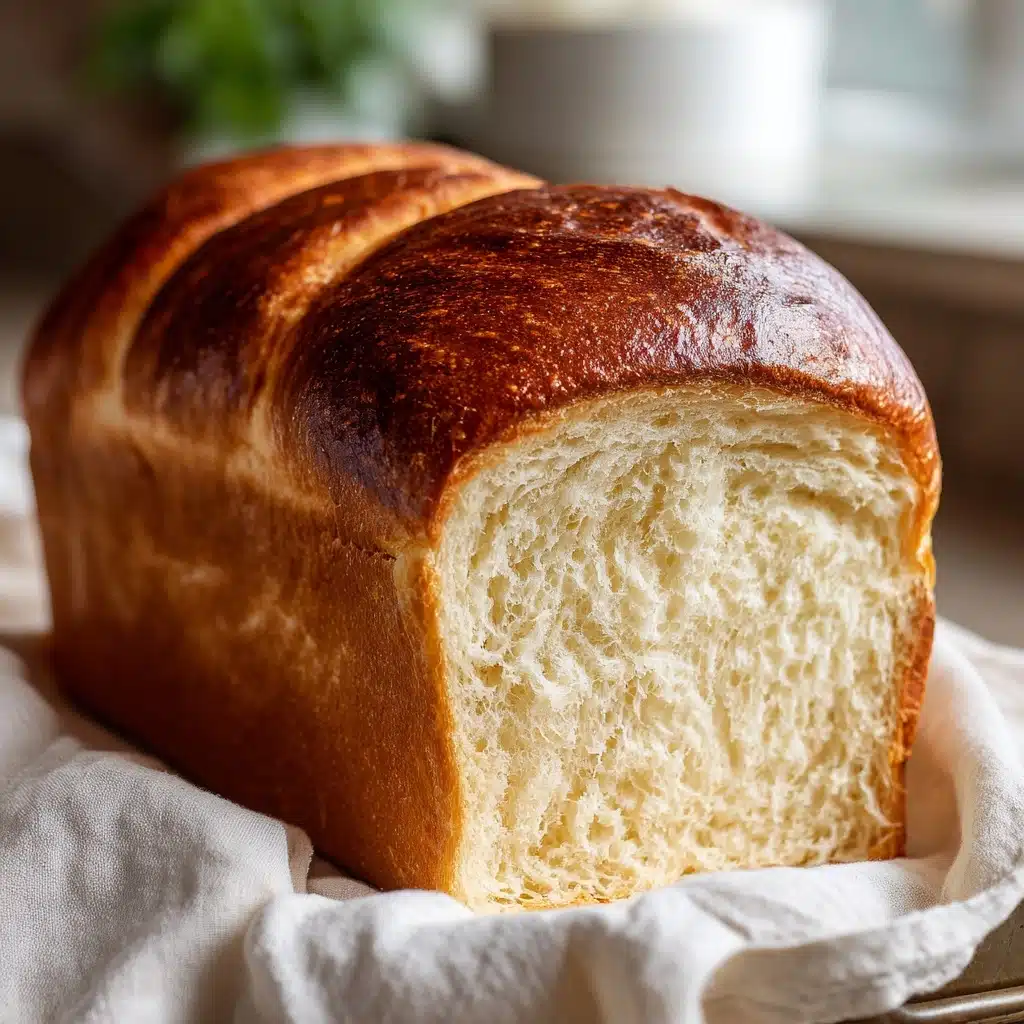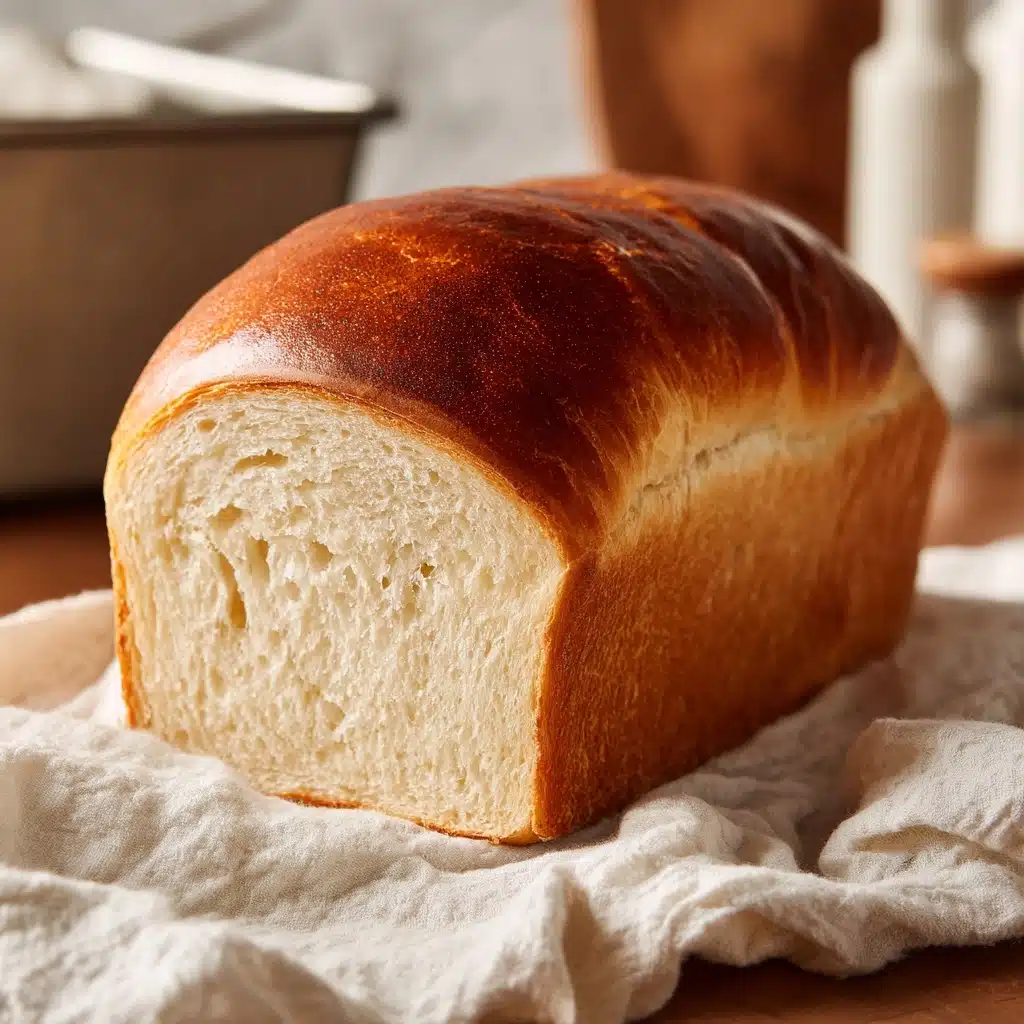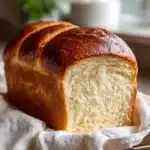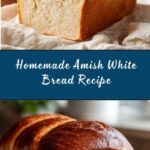If you’re searching for the perfect loaf that’s as delightful to make as it is to eat, Amish White Bread is the recipe you need in your life. There’s nothing like the irresistible aroma of fresh-baked bread wafting through your kitchen, and this simple, time-honored loaf checks every box: pillowy soft interior, golden crust, and just the right touch of sweetness. Whether toasted for breakfast or piled high for a dreamy sandwich, Amish White Bread has been a cherished favorite for generations, and once you try it, you’ll understand why this recipe deserves a spot in your regular baking rotation.
Ingredients You’ll Need
The beauty of Amish White Bread lies in its straightforward ingredients, each one chosen to bring out a rich flavor and fluffy texture. With just a handful of pantry staples, you’ll be amazed at what you can create — every item serves a purpose and blends harmoniously to craft the most comforting homemade loaf imaginable.
- Warm Water (2 cups, 110°F): Helps dissolve the yeast and sugar, kicking off the fermentation process for a great rise.
- Granulated Sugar (⅔ cup): Adds a touch of sweetness and fuels the yeast to ensure a soft, tender crumb and beautiful color.
- Active Dry Yeast (1½ tablespoons): The powerhouse that makes the bread rise tall and airy — make sure it’s fresh for best results!
- Vegetable Oil (¼ cup): Keeps the loaf moist and plush, plus it gives the crust a lovely sheen and soft bite.
- Salt (1½ teaspoons): Balances flavors and tempers the sweetness, making for a well-rounded, crave-worthy bread.
- All-Purpose Flour (6 cups): The sturdy base that supports the bread’s structure; use a kitchen scale for extra precision if you have one.
How to Make Amish White Bread
Step 1: Activate the Yeast
Begin by dissolving the sugar into your warm water in a large mixing bowl. Once the sugar is mostly gone, sprinkle the active dry yeast over the surface and give it a gentle stir. Let this sit for about 10 minutes until it turns foamy and bubbly — this means the yeast is alive and ready to work its magic! If you don’t see much foam, your yeast may be inactive, so it’s best to try again with fresh yeast for the best Amish White Bread.
Step 2: Mix in Oil and Salt, Then Add Flour
When your yeast mixture is nice and frothy, pour in the vegetable oil and sprinkle in the salt. Gradually add the all-purpose flour, one cup at a time, stirring with a sturdy spoon or your hands. As the dough starts to come together and gets harder to stir, switch to kneading by hand or using a stand mixer fitted with a dough hook. Your kitchen will already be smelling like comfort at this stage!
Step 3: Knead the Dough
Once all the flour is incorporated, transfer the dough onto a lightly floured surface. Now it’s time to knead for about 8 to 10 minutes. This step is key for that signature soft, stretchy texture — keep folding and pressing until the dough feels smooth and elastic. If it’s too sticky, dust on just a little more flour, but be careful not to overdo it.
Step 4: First Rise
Lightly oil a large bowl and tuck your kneaded dough inside, turning it once to coat the surface. Cover the bowl with a clean kitchen towel and set it in a warm, draft-free place. Let it rise until doubled in size, about 1 hour. Watching the dough puff up is so satisfying, and it’s the secret behind the light, fluffy crumb in Amish White Bread!
Step 5: Shape and Second Rise
After the dough has doubled, punch it down to release the air bubbles. Divide it into two equal pieces and gently shape each into a loaf. Place the shaped dough into two greased 9×5-inch loaf pans. Cover them again with a towel and let them rise a second time for 30 to 40 minutes, until the dough crowns roughly 1 inch above the edge of the pans.
Step 6: Bake to Perfection
Preheat your oven to 350°F as the loaves finish their second rise. Slide the pans onto the middle rack and bake for 25 to 30 minutes, until the tops are golden brown and the loaves sound hollow when gently tapped. For a dreamy soft crust, brush the tops with melted butter fresh from the oven. Let your Amish White Bread cool on wire racks before slicing — if you can resist!
How to Serve Amish White Bread

Garnishes
Once your loaves have cooled, slather a slice with a pat of soft butter or a drizzle of local honey for a classic, comforting taste. If you love savory sides, try a sprinkle of flaky sea salt or a fresh grind of black pepper right after buttering. A dash of cinnamon sugar turns a warm slice of Amish White Bread into a quick breakfast treat everyone will adore.
Side Dishes
Amish White Bread shines as a companion for homemade soups, hearty stews, or even a fresh green salad. Serve thick, pillowy slices alongside chili, creamy tomato bisque, or use it as a reliable sandwich base piled high with your favorite deli meats, cheeses, and crisp veggies. It’s equally delicious with scrambled eggs for breakfast or as toast for any meal.
Creative Ways to Present
Take your Amish White Bread up a notch by transforming it into French toast — its sturdy crumb is perfect for soaking up custard. You can also cube a leftover loaf for homemade croutons, bread pudding, or even use it to build epic grilled cheese sandwiches. For gatherings, arrange thick, warm slices in a rustic bread basket lined with a colorful napkin for a cozy, welcome-home vibe.
Make Ahead and Storage
Storing Leftovers
If you have leftovers (which can be rare!), wrap the cooled bread tightly in plastic wrap or place it in an airtight container. Amish White Bread will stay soft and fresh at room temperature for up to 4 days, though chances are it will be gobbled up in half that time!
Freezing
To freeze, simply slice the cooled bread, stack the slices in a freezer bag, and squeeze out as much air as possible before sealing. Store the bag flat in the freezer; it’ll keep beautifully for up to three months. You can also freeze whole loaves — just wrap tightly in plastic and foil for extra protection against freezer burn.
Reheating
For a bakery-fresh experience, reheat slices by popping them straight into the toaster or warming in the oven at 300°F for 5–10 minutes. If reheating a whole loaf, wrap it in foil before warming to prevent it from drying out. A quick brush with melted butter right after reheating makes every bite melt-in-your-mouth delicious.
FAQs
Can I use instant yeast instead of active dry yeast?
Yes, you can substitute instant yeast in this Amish White Bread recipe. Use the same amount, skip the 10-minute proofing, and mix it directly with the flour before adding wet ingredients. The texture and rise will be nearly identical!
What type Bread
If you prefer, you can swap the vegetable oil for another neutral oil, such as canola or sunflower. Even light olive oil works in a pinch, though it will bring a slightly different flavor to your bread.
How do I know if my dough has risen enough?
Your dough is ready when it has doubled in size during the first rise. Press two fingers into the dough — if the indentation remains and the dough doesn’t immediately spring back, you’re all set for the next step!
Can I make this bread with whole wheat flour?
Yes, but keep in mind that Amish White Bread gets its signature lightness from all-purpose flour. If you want to mix in whole wheat, start by substituting up to half the flour with whole wheat and add a splash more water if the dough is stiff.
How do I get a really soft crust?
For an extra-soft crust, generously brush the tops of the hot loaves with melted butter as soon as they come out of the oven. This classic trick gives Amish White Bread its signature tender touch and a beautiful, shiny finish.
Final Thoughts
Baking Amish White Bread is a true act of comfort and care — the kind of recipe you’ll treasure for years to come. There’s nothing quite like sharing thick slices of homemade bread with the people you love. Give this recipe a try the next time you’re craving something special and see for yourself why it’s a time-tested favorite in kitchens everywhere.
PrintAmish White Bread Recipe
Learn how to make classic Amish White Bread at home with this easy recipe. This soft and fluffy bread is perfect for sandwiches or enjoying on its own.
- Prep Time: 20 minutes
- Cook Time: 30 minutes
- Total Time: 2 hours
- Yield: 2 loaves (about 16 slices) 1x
- Category: Bread
- Method: Baking
- Cuisine: American
- Diet: Vegetarian
Ingredients
For the Bread:
- 2 cups warm water (110°F)
- 2/3 cup granulated sugar
- 1 1/2 tablespoons active dry yeast
- 1/4 cup vegetable oil
- 1 1/2 teaspoons salt
- 6 cups all-purpose flour
Instructions
- Dissolve Sugar in Water: In a large mixing bowl, dissolve the sugar in warm water and then stir in the yeast. Let it sit for about 10 minutes until the mixture becomes foamy.
- Mix Ingredients: Add the oil and salt to the yeast mixture, then gradually mix in the flour one cup at a time.
- Knead Dough: Knead the dough on a lightly floured surface for about 8–10 minutes, until smooth and elastic.
- Rise Dough: Place the dough in a lightly oiled bowl, cover it with a clean towel, and let it rise in a warm area for about 1 hour, or until doubled in size.
- Shape and Bake: Punch down the dough and divide it into two equal parts. Shape each portion into a loaf and place in greased 9×5-inch loaf pans. Let rise again, then bake at 350°F for 25–30 minutes.
- Cool and Serve: Remove from pans and cool on wire racks before slicing and serving.
Notes
- For a softer crust, brush the tops of the hot loaves with melted butter right after baking.
- Bread can be stored at room temperature for up to 4 days or frozen for longer storage.
Nutrition
- Serving Size: 1 slice
- Calories: 140
- Sugar: 4g
- Sodium: 150mg
- Fat: 3g
- Saturated Fat: 0.5g
- Unsaturated Fat: 2.5g
- Trans Fat: 0g
- Carbohydrates: 25g
- Fiber: 1g
- Protein: 3g
- Cholesterol: 0mg




